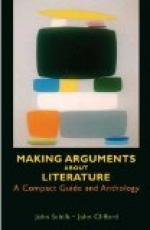The nonimmune individuals experimented upon were all fully informed as to the nature of the experiment and its probable results and all gave their full consent. Fortunately no one of these brave volunteers in the cause of science and humanity suffered a fatal attack of the disease, although several were very ill and gave great anxiety to the members of the board, who fully appreciated the grave responsibility which rested upon them. That these experiments were justifiable under the circumstances mentioned is, I believe, beyond question. In no other way could the fact established have been demonstrated, and the knowledge gained is of inestimable value as a guide to reliable measures of prevention. Already it is being applied in Cuba, and without doubt innumerable lives will be saved as a result of these experiments showing the precise method by which yellow fever is contracted by those exposed in an “infected locality.” Some of these volunteers were enlisted men of the United States Army and some were Spanish immigrants who had recently arrived in Cuba. When taken sick they received the best possible care, and after their recovery they had the advantage of being “immunes” who had nothing further to fear from the disease which has caused the death of thousands and tens of thousands of Spanish soldiers and immigrants who have come to Cuba under the orders of their government or to seek their fortunes.
The experiments already referred to show in the most conclusive manner that the blood of yellow fever patients contains the infectious agent, or germ, to which the disease is due, and this has been further demonstrated by direct inoculations from man to man. This experiment was made by Dr. Reed at “Camp Lazear” upon four individuals, who freely consented to it; and in three of the four a typical attack of yellow fever resulted from the blood injection. The blood was taken from a vein at the bend of the elbow on the first or second day of sickness and was injected subcutaneously into the four nonimmune individuals, the amount being in one positive case 2 cc, in one 1.5 cc, and in one O.5 cc. In the case attended with a negative result, a Spanish immigrant, a mosquito inoculation also proved to be without effect, and Dr. Reed supposes that this individual “probably possesses a natural immunity to yellow fever.” Dr. Reed says with reference to these experiments:
It is important to note that in the three cases in which the injection of the blood brought about an attack of yellow fever, careful culture from the same blood, taken immediately after injection, failed to show the presence of Sanarelli’s bacillus.
Having demonstrated the fact that yellow fever is propagated by mosquitoes, Dr. Reed and his associates have endeavored to ascertain whether it may also be propagated, as has been commonly supposed, by clothing, bedding, and other articles which have been in use by those sick with this disease. With reference to the experiments made for the solution of this question I cannot do better than to quote in extensa from Dr. Reed’s paper read at the Pan-American Medical Congress in Havana.




